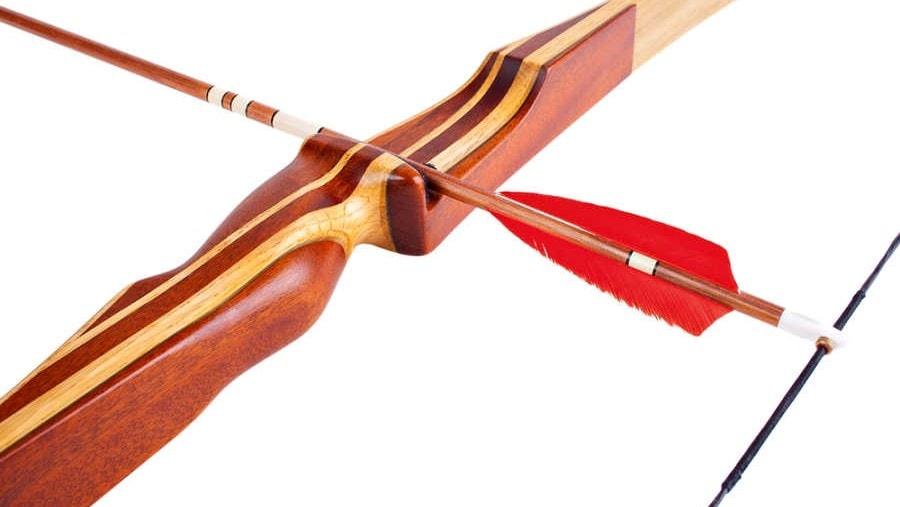Korean bowmaker Samick built the Sage Takedown as a budget Recurve Bow option. Any Samick Sage Takedown Recurve Bow review will mention the low price. While this bow does have some shortcomings, it offers excellent value overall.
It will shoot just as well as some more expensive bows and looks good mounted on the wall. The materials are of high quality for the price range, and it comes with plenty of accessories that make it an attractive buy for those who are new to archery and those who want to add a recurve bow to their arsenal.

Samick Sage Recurve Bow
Contents (Jump to Topic)
TogglePros & Cons
Pros:
- It’s easy to put together
- You can change the draw weight
- Takedown Bow
- Beginners Friendly
- Well-Known Brand
Cons:
- The string will wear out quickly
- The bow isn’t great for taller archers
- The Sage isn’t the best option for intermediate and advanced shooters
First Impression
My first impression of this takedown recurve bow is that it’s an excellent choice for beginners.
I love how easy it is to assemble and that it’s very comfortable for an average height person.
The hard maple and Dymond laminate is tasteful and makes the bow look attractive despite its budget price tag.
The 62-inch length is a little too long for hunting. If you are shooting targets, however, it is a great option.
Overall, the Samick Sage is an excellent bow for beginners and an option that can grow with you as you get better at archery.

Specifications
- Draw weights: 25 – 60 lbs. in 5-pound increments
- Brace height: 7.5″ – 8.25″
- Weight: 3.4 lbs.
- AMO length: 62″
- Max draw: 29″
- Riser: Olive Dymond and hard maple laminate
- Shelf: Cut past center
- Limbs: Hard maple laminate and black fiberglass coating
A Great Beginners Takedown Bow
Having a takedown recurve bow is a huge advantage for those who want to have the ability to change their draw weight.
If you are new to archery: A takedown bow allows you to detach the bow’s limbs from the riser (the handle of the bow). In other words, you can “take down” the limbs.
So why is this an advantage? It allows you to adjust the draw weight. The draw weight of a bow is the maximum potential energy the bow stores when fully drawn.
A bow with a lower draw weight will store less potential energy, and therefore shoot arrows with less force. Increasing the draw weight will allow you to shoot farther and with more power.
The draw weight depends, in large part, on the limbs used in the bow. A takedown bow allows you to replace the limbs and change the draw weight.
The Samick Sage allows you to adjust the draw weight for different users or if you use the bow for different purposes.
This option is great for novices because they can increase the draw weight as they gain more archery skills.
A User-Friendly Bow

Another advantage of the Samick Sage is how easy it is to put together. Being a recurve bow, the Samick Sage is much easier to put together and use than a compound bow.
All you have to do is screw in the limbs, attach the string, and set the brace height to whatever is most comfortable for your needs and shooting style. You can then attach the arrow rest and set the nock.
Another great plus for the Samick Sage is that it has plenty of points on the riser where you can attach different accessories, including the arrow rest, bow stabilizer, and bow sight.
Like the draw weight, you can add to the bow as your skills improve.
What to Watch Out For
The string on the Samick Sage isn’t exactly the most durable option on the market. It gets frayed after a couple of months.
The good news is that you can easily replace it. The rest of the bow is durable, so a below-par string doesn’t disqualify the Sage.
On the plus side, the Samick has a comfortable draw length for archers of average height.
On the flip side, if you’re tall and have a long draw length, then you might not enjoy using this bow very much.
If your draw length is over 29 inches, this bow may be too small for you.
The Samick Sage has lots of great features that make it a perfect fit for beginners. You can easily make adjustments as you gain new skills, and the bow will perform well as you learn archery.
However, eventually, your skills will surpass the performance abilities of this bow.
If you’re an expert archer, you will be better off with a more precise bow that has a longer draw length and a better string.
Summary
The Samick Sage takedown recurve bow offers great value to novice archers and those seeking to improve their sport shooting skills.

With its graceful design, respectable shooting power, and wide draw weight range, it’s the perfect starter bow for aspiring archers.






